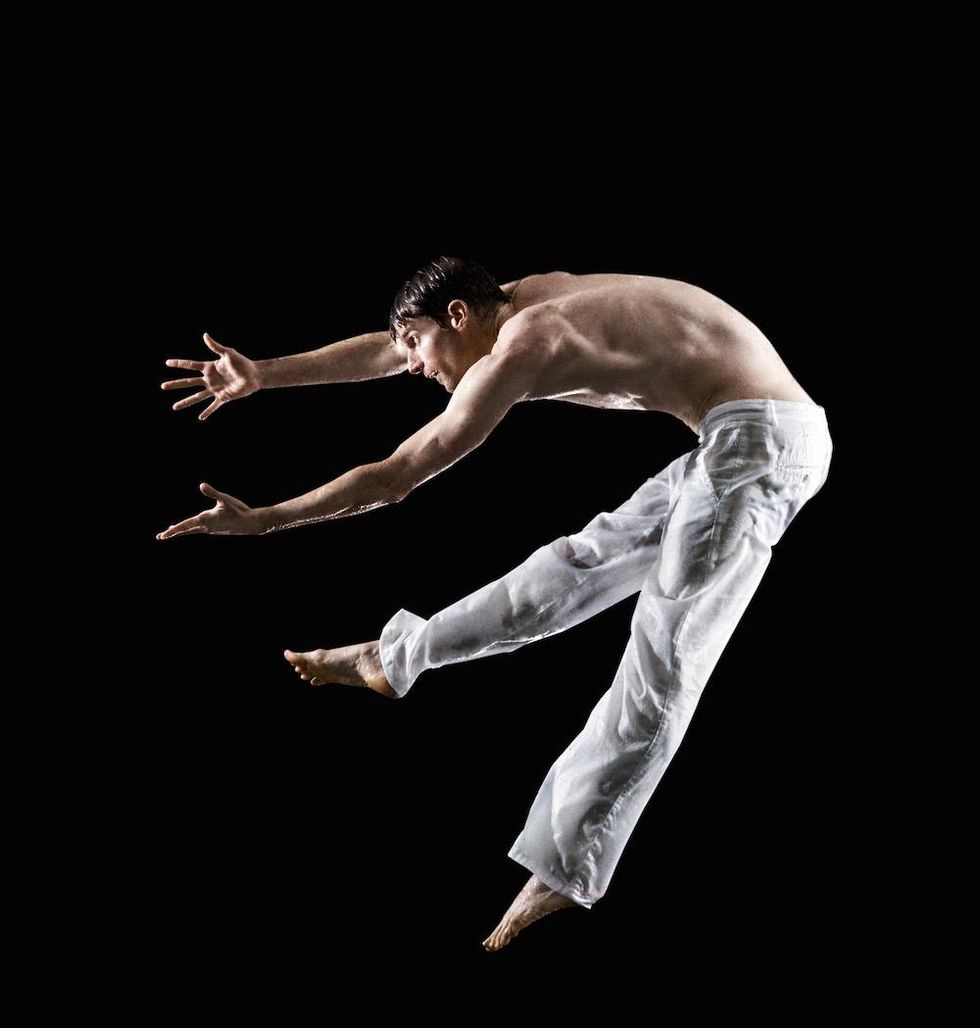
Dance becomes the unexpected, yet surprisingly effective, backdrop in the new film, Test, about the introduction of the first AIDS test.
June 06 2014 11:30 AM EST
May 01 2018 11:46 PM EST
By continuing to use our site, you agree to our Private Policy and Terms of Use.

Dance becomes the unexpected, yet surprisingly effective, backdrop in the new film, Test, about the introduction of the first AIDS test.
In the 1948 film classic The Red Shoes a dancer stars in a ballet version of Hans Christian Anderson's dark fairy tale of the same name in which the titular footwear forces a young woman to dance to her death. In 2010's Black Swan, the world of ballet becomes a menacing psychological rabbit hole.
Those are rare example where Dance = Death. Usually, dance adds a bit of bounce to a film (think Singin' in the Rain or Footloose) or is popped like a sexy pill (Flashdance, perhaps, or Dirty Dancing). Whatever its cinematic purpose, more often than not, it serves as a benign backdrop for the (romantic) drama at the foreground.
The new film Test (in theaters and on demand today after hitting the film festival circuit last year), turns dance into a battleground. Like The Red Shoes and Black Swan, it presents dance as a site of danger. The characters are members of a contemporary ballet company in San Francisco in 1985 and AIDS, still largely a question mark, is the stealth, sneaky enemy.
Because touch is the quintessential ingredient of the professional dancer's job, a mere rehearsal becomes a treacherous environment that illuminates the fear of proximity and rampant misinformation that characterized this era. A suspicious drop of sweat, for all they know, could be a fatal bullet.
And because dance reveals the body so explicitly (the men in Test are always shirtless on stage), it's difficult to hide evidence of infection. Several scenes show dancers using makeup to cover unsightly spots. When the body turns against its owner, it gives itself away--for dancers, there's nowhere to hide. This forced reckoning also represents the way AIDS forcefully outed gay men to their families and to the world (Rock Hudson's death, as an example, casts a shadow over Test).

One intriguing, albeit peculiar, decision of the filmmaker (writer and director Chris Mason Johnson) is to cast the world of dance as a contentious and unfriendly place to the gay men who inhabited it. In the film, the harsh director of the dance company barks at his dancers to be more manly, and there are references to his own self-loathing. Meanwhile, the doctor that explains and administers the new HIV test is comforting, understanding and encouraging.
The dance world has long been a haven for gay men while the medical profession, at least initially, offered little empathy to those stricken by AIDS. So to swap around that emotional support system feels a little suspect here.
But perhaps it can be seen as another metaphor, suggesting that in the early years of AIDS, one's home could quickly turn hostile while compassion could come from unexpected places. And while the body has the capacity to soar, it can also betray.
Read about star Matthew Risch here. Test opens in select theaters and On Demand June 6.
Want more breaking equality news & trending entertainment stories?
Check out our NEW 24/7 streaming service: the Advocate Channel!
Download the Advocate Channel App for your mobile phone and your favorite streaming device!